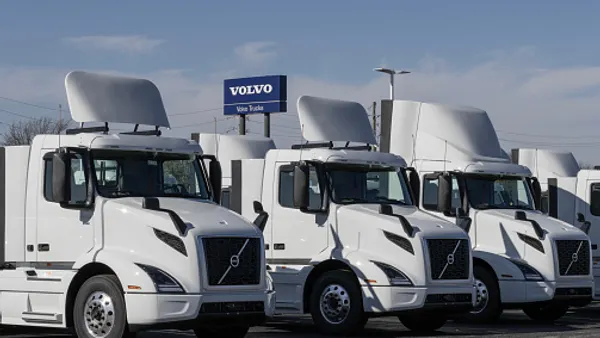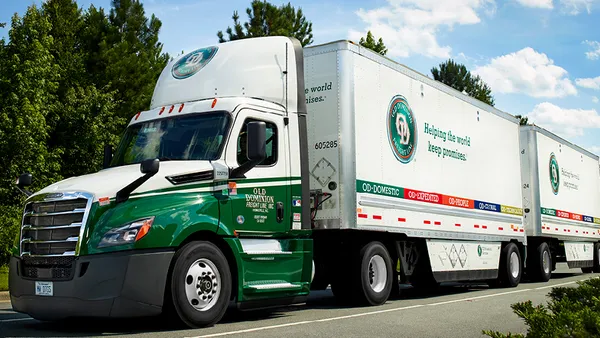Dive Brief:
- The Environmental Protection Agency (EPA) will once again enforce production limits on "glider trucks," a reversal from a decision made July 6 to stop enforcing limits on the manufacturing of trucks with new bodies retrofitted with older diesel engines, the Associated Press reported.
- Following the July 6 announcement, three environmental groups and a coalition of 17 states and Washington, D.C. "filed several separate administrative requests for the EPA to either immediately withdraw or administratively stay" the rule, according to a memo from acting EPA administrator Andrew Wheeler.
- Glider trucks emit 40 times more nitrogen oxide than older vehicles, Reuters reported. They're commonly referred to as "super polluting" trucks.
Dive Insight:
The EPA's reversal and decision to continue enforcement on glider truck production is likely welcome news to shippers looking to reduce emissions throughout their supply chains.
Some fleets and owner operators may use gliders for cost savings. Repurposing an old engine into a new truck body costs significantly less than purchasing an entirely new truck. Smaller fleets in particular may not have the disposable income needed to invest in green energy resources and technology.
"It is well-known that gliders are purchased to save money ... [and] allude the use of engine technologies that virtually eliminate NOx (nitrogen oxide) and PM (particular matter) emissions," the American Trucking Associations (ATA) wrote in testimony, providing context on glider vehicles in December 2017.
But ATA said gliders create a competitive disadvantage for fleets investing in new, more environmentally friendly equipment.
"It is not equitable for the cleanest fleet operations in the nation to keep paying the bill for cleaner air to offset the excess emissions of older trucking equipment operating in perpetuity," ATA wrote at the time. The association has not commented specifically on the EPA's rule reversal.












